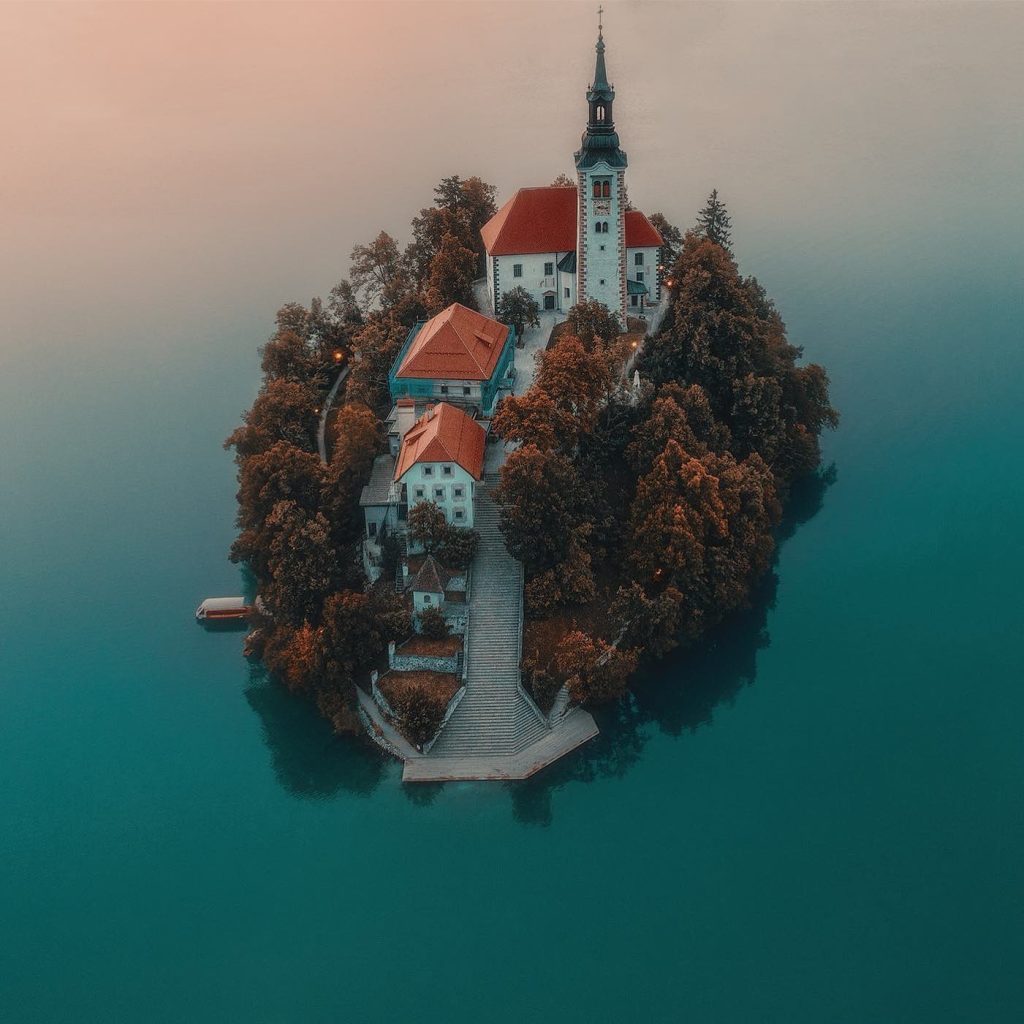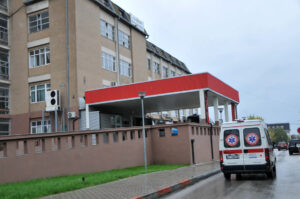5 incredible facts about Lake Bled in Slovenia

Bled Castle, perched on a rocky precipice above Lake Bled is over 1000 years old. And while it’s most famous for its dramatic location, a wine-tasting experience in the castle cellar is an absolute highlight.
Kremna rezina, a Slovenia cream cake and regional speciality of the Lake Bled area, dates back to the 18th century. This light-as-a-feather cake (think lashings of vanilla cream, custard, golden puff pastry and a liberal dusting of icing sugar) has been granted ‘protected designation of origin status’, which means it is only available from the patisseries at Lake Bled.
Lake Bled is home to the only island in Slovenia. Less than an acre in size, this one-of-a-kind destination is packed with history, life and joy.
Legend and myths
Legend has it that fairies created Lake Bled, Slovenia. Once upon a time, as the story goes, Lake Bled was a fertile valley that attracted shepherds by day and fairies by night. The latter came to dance on the valley’s lush carpet of grass. Afraid that the sheep would eat all of the grass, the fairies asked the local shepherds to build a fence around their dance floor.
Unfortunately, the shepherds ignored their request, and soon the sheep had eaten all the grass, leaving behind nothing but dry, barren earth. As a result, the fairies called upon the surrounding springs and brooks to flood the valley and fill it with water. Only an island in the middle of the lake remained, where the fairies could continue to dance under the stars.
Bled Island Church
Bled Island’s beautiful church, the 17th century Church of the Assumption, has its own legend of course. Folklore tells the story of a tragic widow who, upon the death of her husband, recast her jewellery into a special bell. She wanted to install the bell in the chapel on Bled Island in honour of her husband. While transporting the bell, they lost it at the bottom of the lake during a sudden storm (in some versions of the story, with the boat, boatmen and widow herself). The Pope was so moved by her story that he decided to make a new bell – the ‘wishing bell’ that still stands in the belfry today.
Need a little more magic and mystery? Lake Bled’s rich folklore will have you believe:
- On a clear night, you can hear the original bell chiming from the bottom of the lake.
- A Slovenian groom has to carry his new bride up the church’s beautiful Baroque staircase – all 99 stone steps – to ensure a long and happy life.
- Forget wishing wells, visitors to the church need to ring the ancient ‘wishing bell’. The bell will grant a wish to whoever manages to ring it three times with just one pull of the rope. The only catch? You have to truly believe in God.
The water is warm
One of the most interesting Lake Bled facts is that Lake Bled’s clear, turquoise water is surprisingly warm. Although Lake Bled can trace its origins back to the Ice Age, and the site of the Bohinj Glacier, the lake is actually fed by mild, thermal springs. In summer, the water temperature gets up to 26°C (or 78.8°F), making it the perfect place for a swim.
There are swimming areas on the northern and western banks, and visitors can enjoy kayaking, canoeing and stand-up paddleboarding.
Lake Bled, Slovenia, is one of the ‘greenest’ attractions in the world
In 2016, Slovenia became the first ‘green’ country in the world – having achieved 96% compliance with the required sustainability criteria of the international organisation, Green Destinations.
Nowhere is this more apparent than at Lake Bled. Despite being Slovenia’s star tourist attraction, the lake remains unspoilt. The Slovenians have banned motorboats on the lake, so visitors need to get across to the island under their own steam (there are rowboats for hire). Or in the capable hands of a pletnarstvo – one of Lake Bled’s traditional oarsman.
As a result, the water is clean, and the atmosphere still, quiet and delightfully peaceful.
The role of pletnarstvo (oarsman) is passed down from generation to generation
Most visitors to Lake Bled can’t resist a cruise on one of the lake’s pletna boats. These wooden, flat-bottomed boats date back to the 12th century. But what visitors might not realise is that the role of pletnarstvo, and the unique stehrudder rowing technique (where the oarsman is standing and propelling the boat forward with two oars), has been passed down for generations.
The boats are also hand-built, hand-painted and lovingly maintained. For a glimpse into a centuries-old Slovenian tradition, this is one soul-stirring adventure you will never forget.
Walks and waterfalls galore
In addition to the cobalt waters of Lake Bled, you should explore the area’s beautiful Alpine landscape. Walking paths will get you around the lake in under two hours – with plenty of viewpoints and wooden benches en route.
Slovenia is also blessed with a number of Alpine waterfalls, the most famous of which, Savica Waterfall, is just 40 minutes from Lake Bled. Fit walkers (it is quite a climb) keen to tackle it will enjoy perfect views of the fall’s 78-metre descent and jade-green pools.
Alternatively, stay close to Bled and hike to the top of Mala Osojnica, a hill situated above the western side of Lake Bled. At 685 metres (2247 feet) above sea level, the hill’s summit offers sweeping views of the lake and countryside below.
In summer you can get your heart racing on the Straža Bled toboggan track, while winter promises cross-country skiing, a spot of snowshoeing, Christmas markets, relaxing in thermal spas and incredible snow-capped mountains!








